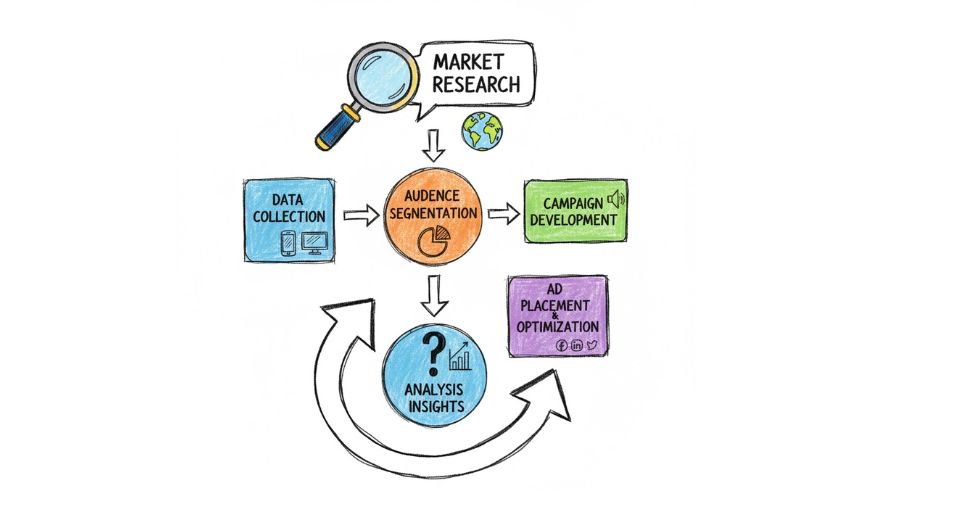
Oct 29, 2025

In the current decade of the age of digital, the global digital advertising market created by Metastat Insight becomes the center point as more and more consumers lead their lives and wallet in cyberspace. From viewing brief video segments to accessing smart-home control hubs, people now engage with brands through real-time, customized experiences instead of motionless billboards and mass broadcast commercials. This rich soil is important as companies that employ it can connect with people in real time, send messages that are custom suited and gauge their impact much more effectively than they could before.
Market context
Old advertising models are being thrashed by rising headwinds as consumers split attention among mobile apps, streaming services and social media. Marketers are having trouble keeping up with shifting consumption patterns, declining loyalty and limited measurables. Among these issues, online adverting offers a solution.
It allows marketers to speak to individuals where they are already communicating with devices, apps and networks and not where they previously watched interruptions. Through tools that facilitate meaningful access to behaviour, clicks, conversions and reach, the marketplace presents opportunities to make spend more efficient and connect spending more directly to results.
How it works / Why it's valuable
In essence, online advertising enables messages to be posted on internet-accessible media channels like search engines, social networks, streaming sites and websites based on user activity or pre-determined audience segments. After an ad is served, real-time auctions, automated platforms and machine learning algorithms assist in determining impressions, location and cost. The benefit is clear: brands receive shorter feedback loops, improved engagement measurement and the ability to tweak campaigns mid-flight.
In addition, this marketplace also accommodates formats in display, mobile, video, native and social so messaging is context- and device-sensitive. With information at their fingertips, choices previously influenced by guessing now sail on hard data. That makes this space especially potent for marketers who need actionable intelligence and channel-agnostic deployment.
Growth story / Technological evolution
The market's evolution started humbly enough with banner ads and basic display placements. It has since evolved from search-based marketing to mobile-first marketing to high-impact video and social-native experiences. Pivotal moments happened when smartphones became ubiquitous and when platforms went all-in on automated ad buying at scale. More recent innovations have been AI-powered creative optimisation, first-party data targeting (due to the trend towards privacy) and connected-TV inventory which combines streaming and linear heritage.
With expanding ad-tech stacks, increased transparency along with more nuanced measurement tools for performance translating what was previously imprecise impressions into measurable results and fueling ongoing innovation.
Local or global trends
Adoption is strongest in advanced economies with high internet penetration, pervasive mobile phone use, and established e-commerce environments. Marketing budgets in North America and Western Europe lean heavily towards digital media as a share of overall ad spend. Meanwhile, growth economies such as Asia-Pacific and Latin America offer high growth potential: increasing mobile phone penetration, first-generation mobile citizens and expanding digital channels ensure that organisations that succeed in entering such markets can make inroads prior to market saturation. In most of the Asian markets, migration to short-form mobile video and live shopping is hastening the exodus of ad dollars out of traditional media more quickly than ever.
Challenges and opportunities/Challenges persist.
Soaring costs of high-end ad inventory, growing regulation of use of data and privacy, and measuring complexity of cross-channel effect all are genuine challenges for practitioners. Skeptical buyers, ad-blocking and falsified impressions create even more complexity. Conversely, new technology opportunities emerge in: AI-powered creative and targeting, more robust data merging, immersive formats (augmented/virtual reality), and merging bordering industries (gaming, social commerce, connected devices) open paths for new expansion. With measurement on the rise, value can shift to publishers who provide engagement and relevance as opposed to mere scale.
Why it matters now
The global digital advertising market covered by Metastat Insight has a strategic position within wider trends for digital change, data-driven decision-making and personalisation. Companies that access this market can access an engaged online community, ability to see spend through to outcome, and flexibility to adapt to changing consumer behaviour.
As with continued reign of connectivity, platforms and devices in how people engage with content, so the advertising economy has to catch up. Such a marketplace isn't merely part of contemporary marketing it is establishing the tone of the future on how brands are engaging, media is being consumed and value is being exchanged.
Drop us an email at:
Call us on:
+1 214 613 5758
+91 73850 57479